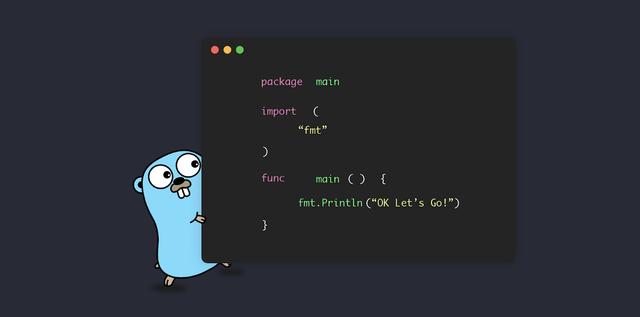
当今世界,任何计算机系统每天都会生成大量日志或数据。 随着系统的发展,将调试数据存储到数据库中是不可行的,因为它们是不可变的,仅用于分析和故障排除。 因此,组织倾向于将其存储在驻留在本地磁盘存储中的文件中。
我们将使用Golang从大小为16 GB的.txt或.log文件中提取日志,其中包含数百万行。
上代码…!
首先打开文件。 我们将对任何文件IO使用标准的Go os.File。
f, err := os.Open(fileName) defer file.Close() //Do not forget to close the file if err != nil { fmt.Println("cannot able to read the file", err) return }打开文件后,我们有以下两个选项可继续进行
· 逐行读取文件,这有助于减少内存负担,但在IO中会花费更多时间。
· 立即将整个文件读取到内存中并处理该文件,这将消耗更多的内存,但会大大增加时间。
由于文件太大(即16 GB),因此无法将整个文件加载到内存中。 但是第一种选择对我们也不可行,因为我们想在几秒钟内处理文件。
但是你猜怎么着,还有第三种选择。 瞧…! 取而代之的是,使用Go中可用的bufio.NewReader()将整个文件加载到内存中。
r := bufio.NewReader(f)for {buf := make([]byte,4*1024) //the chunk sizen, err := r.Read(buf) //loading chunk into buffer buf = buf[:n]if n == 0 { if err == nil { fmt.Println(err) break } if err == io.EOF { break } return err }}一旦有了块,我们将派生一个线程,即Go例程,以与其他块同时处理每个块。 上面的代码将更改为-
//sync pools to reuse the memory and decrease the preassure on //Garbage CollectorlinesPool := sync.Pool{New: func() interface{} { lines := make([]byte, 500*1024) return lines}}stringPool := sync.Pool{New: func() interface{} { lines := "" return lines}}slicePool := sync.Pool{New: func() interface{} { lines := make([]string, 100) return lines}}r := bufio.NewReader(f)var wg sync.WaitGroup //wait group to keep track off all threadsfor { buf := linesPool.Get().([]byte) n, err := r.Read(buf) buf = buf[:n]if n == 0 { if err == nil { fmt.Println(err) break } if err == io.EOF { break } return err }nextUntillNewline, err := r.ReadBytes('\n')//read entire line if err != io.EOF { buf = append(buf, nextUntillNewline...) } wg.Add(1) go func() { //process each chunk concurrently //start -> log start time, end -> log end time ProcessChunk(buf, &linesPool, &stringPool, &slicePool, start, end)wg.Done() }()}wg.Wait()}上面的代码引入了两个新的优化:
· sync.Pool是一个强大的实例池,可以重复使用这些实例以减轻垃圾收集器的压力。 我们将继续分配给各个片的内存。 它可以帮助我们减少内存消耗,并使我们的工作大大加快。
· Go例程有助于我们同时处理缓冲区块,从而显着提高了处理速度。
现在,我们实现ProcessChunk函数,该函数将处理日志行,其格式为
2020-01-31T20:12:38.1234Z, Some Field, Other Field, And so on, Till new line,...\n
我们将根据命令行提供的时间戳提取日志。
func ProcessChunk(chunk []byte, linesPool *sync.Pool, stringPool *sync.Pool, slicePool *sync.Pool, start time.Time, end time.Time) {//another wait group to process every chunk further var wg2 sync.WaitGrouplogs := stringPool.Get().(string)logs = string(chunk)linesPool.Put(chunk) //put back the chunk in pool//split the string by "\n", so that we have slice of logs logsSlice := strings.Split(logs, "\n")stringPool.Put(logs) //put back the string poolchunkSize := 100 //process the bunch of 100 logs in threadn := len(logsSlice)noOfThread := n / chunkSizeif n%chunkSize != 0 { //check for overflow noOfThread++ }length := len(logsSlice)//traverse the chunk for i := 0; i < length; i += chunkSize { wg2.Add(1)//process each chunk in saperate chunk go func(s int, e int) { for i:= s; i<e;i++{ text := logsSlice[i]if len(text) == 0 { continue } logParts := strings.SplitN(text, ",", 2) logCreationTimeString := logParts[0] logCreationTime, err := time.Parse("2006-01- 02T15:04:05.0000Z", logCreationTimeString)if err != nil { fmt.Printf("\n Could not able to parse the time :%s for log : %v", logCreationTimeString, text) return }// check if log's timestamp is inbetween our desired period if logCreationTime.After(start) && logCreationTime.Before(end) { fmt.Println(text) } } textSlice = nil wg2.Done() }(i*chunkSize, int(math.Min(float64((i+1)*chunkSize), float64(len(logsSlice))))) //passing the indexes for processing} wg2.Wait() //wait for a chunk to finish logsSlice = nil}上面的代码使用16 GB的日志文件进行基准测试。
提取日志所需的时间约为25秒。
完整的工作代码如下。
您可以通过ohm.patel1997@gmail.com与我联系。
如有任何疑问和改进,。
(本文翻译自Ohm Patel的文章《Reading 16GB file in seconds, Golang》,参考:https://medium.com/@
ohm.patel1997/processing-16gb-file-in-seconds-go-lang-3982c235dfa2)
 鲁公网安备37020202000738号
鲁公网安备37020202000738号